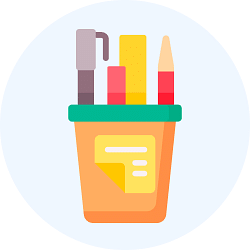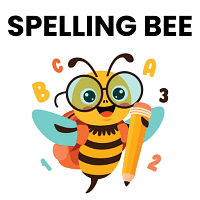Class 4 Exam > Class 4 Questions > Are there any practical experiments or activi...
Start Learning for Free
Are there any practical experiments or activities included in the Science textbook?
Most Upvoted Answer
Are there any practical experiments or activities included in the Scie...
Practical Experiments and Activities in the Science Textbook
The Science textbook for Class 4 includes a variety of practical experiments and activities to engage students in hands-on learning. These activities are designed to promote curiosity, critical thinking, and a deeper understanding of scientific concepts. Here are some examples of the practical experiments and activities included in the Science textbook:
1. Plant Growth Experiment:
Students are encouraged to conduct a simple plant growth experiment to understand the factors that affect plant growth. They are provided with seeds, pots, soil, and water. They are instructed to plant the seeds in different pots with varying amounts of sunlight and water. Through regular observation and measurement, students can learn about the importance of sunlight and water for plant growth.
2. Magnet Exploration:
To explore the properties of magnets, students are given a set of magnets and a variety of objects made from different materials. They are instructed to test the magnetic properties of these objects by bringing them close to the magnets. By observing which objects are attracted to the magnets and which are not, students can learn about the magnetic properties of different materials.
3. Electrical Circuit Experiment:
To understand the concept of an electrical circuit, students are provided with batteries, bulbs, wires, and switches. They are guided to connect these components in different ways to create circuits and observe the effects. Through this experiment, students can learn about the flow of electricity, the role of switches, and how to make a bulb light up.
4. Water Density Experiment:
To explore the concept of density, students are given containers of water and a variety of objects made from different materials. They are instructed to predict and test the floating or sinking behavior of these objects in water. By observing and recording the results, students can learn about the concept of density and how it affects the buoyancy of objects.
5. Weather Observation:
Students are encouraged to observe and record daily weather conditions such as temperature, rainfall, and wind speed. They can use simple tools like thermometers and rain gauges to measure these parameters. By maintaining a weather journal over a period of time, students can learn about weather patterns, seasonal changes, and the impact of weather on their surroundings.
These practical experiments and activities not only make the learning process more interactive and enjoyable but also provide students with a practical understanding of scientific concepts. By engaging in hands-on exploration, students can develop critical thinking skills, problem-solving abilities, and a deeper appreciation for the wonders of the natural world.
The Science textbook for Class 4 includes a variety of practical experiments and activities to engage students in hands-on learning. These activities are designed to promote curiosity, critical thinking, and a deeper understanding of scientific concepts. Here are some examples of the practical experiments and activities included in the Science textbook:
1. Plant Growth Experiment:
Students are encouraged to conduct a simple plant growth experiment to understand the factors that affect plant growth. They are provided with seeds, pots, soil, and water. They are instructed to plant the seeds in different pots with varying amounts of sunlight and water. Through regular observation and measurement, students can learn about the importance of sunlight and water for plant growth.
2. Magnet Exploration:
To explore the properties of magnets, students are given a set of magnets and a variety of objects made from different materials. They are instructed to test the magnetic properties of these objects by bringing them close to the magnets. By observing which objects are attracted to the magnets and which are not, students can learn about the magnetic properties of different materials.
3. Electrical Circuit Experiment:
To understand the concept of an electrical circuit, students are provided with batteries, bulbs, wires, and switches. They are guided to connect these components in different ways to create circuits and observe the effects. Through this experiment, students can learn about the flow of electricity, the role of switches, and how to make a bulb light up.
4. Water Density Experiment:
To explore the concept of density, students are given containers of water and a variety of objects made from different materials. They are instructed to predict and test the floating or sinking behavior of these objects in water. By observing and recording the results, students can learn about the concept of density and how it affects the buoyancy of objects.
5. Weather Observation:
Students are encouraged to observe and record daily weather conditions such as temperature, rainfall, and wind speed. They can use simple tools like thermometers and rain gauges to measure these parameters. By maintaining a weather journal over a period of time, students can learn about weather patterns, seasonal changes, and the impact of weather on their surroundings.
These practical experiments and activities not only make the learning process more interactive and enjoyable but also provide students with a practical understanding of scientific concepts. By engaging in hands-on exploration, students can develop critical thinking skills, problem-solving abilities, and a deeper appreciation for the wonders of the natural world.
Attention Class 4 Students!
To make sure you are not studying endlessly, EduRev has designed Class 4 study material, with Structured Courses, Videos, & Test Series. Plus get personalized analysis, doubt solving and improvement plans to achieve a great score in Class 4.

|
Explore Courses for Class 4 exam
|

|
Are there any practical experiments or activities included in the Science textbook?
Question Description
Are there any practical experiments or activities included in the Science textbook? for Class 4 2024 is part of Class 4 preparation. The Question and answers have been prepared according to the Class 4 exam syllabus. Information about Are there any practical experiments or activities included in the Science textbook? covers all topics & solutions for Class 4 2024 Exam. Find important definitions, questions, meanings, examples, exercises and tests below for Are there any practical experiments or activities included in the Science textbook?.
Are there any practical experiments or activities included in the Science textbook? for Class 4 2024 is part of Class 4 preparation. The Question and answers have been prepared according to the Class 4 exam syllabus. Information about Are there any practical experiments or activities included in the Science textbook? covers all topics & solutions for Class 4 2024 Exam. Find important definitions, questions, meanings, examples, exercises and tests below for Are there any practical experiments or activities included in the Science textbook?.
Solutions for Are there any practical experiments or activities included in the Science textbook? in English & in Hindi are available as part of our courses for Class 4.
Download more important topics, notes, lectures and mock test series for Class 4 Exam by signing up for free.
Here you can find the meaning of Are there any practical experiments or activities included in the Science textbook? defined & explained in the simplest way possible. Besides giving the explanation of
Are there any practical experiments or activities included in the Science textbook?, a detailed solution for Are there any practical experiments or activities included in the Science textbook? has been provided alongside types of Are there any practical experiments or activities included in the Science textbook? theory, EduRev gives you an
ample number of questions to practice Are there any practical experiments or activities included in the Science textbook? tests, examples and also practice Class 4 tests.

|
Explore Courses for Class 4 exam
|

|
Suggested Free Tests
Signup for Free!
Signup to see your scores go up within 7 days! Learn & Practice with 1000+ FREE Notes, Videos & Tests.























